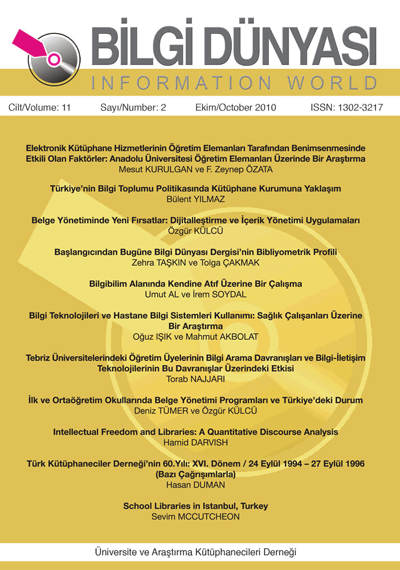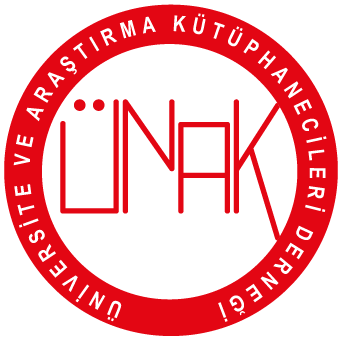Factors that Affect Instructors’ Adoption of Electronic Library Services: A Research on Academicians in Anadolu University
DOI:
https://doi.org/10.15612/BD.2010.237Keywords:
Electronic library services, Technology acceptance model, Individual differences, Structural equation modelingAbstract
The change occured in information and communication technologies has created a significant impact on libraries and information-documentation centers like any organizations. Transitions are taking place in paper-based systems toward electronic systems in the information services that libraries offered. In the presence of large investments made, the adoption and use of these systems by faculty members are becoming increasingly important. In this study, it is intended to define the factors that affect instructors’ adoption/use of electronic library services. To achieve this goal, Technology Acceptance Model (TAM) is used as a theoretical framework and some features in the extenden versions of the model are also considered. In the study individual differences such as innovativeness, self-efficacy and computer anxiety are examined within the context of TAM. The study was conducted with a sample of 426 academic staff working in Anadolu University. The structural equation modeling (SEM) technique was employed to explain the adoption process. The results proved that TAM to be a good theoretical tool to understand instructors’ acceptance/ use of electronic library services and also demonstrate the effects of individual differences (innovativeness, self-efficacy and computer anxiety) on usage intention through perceived ease of use and perceived usefulness. All of the individual differences have significant effects on perceived ease of use of electronic library services. In addition, innovativeness is a much broader concept, that has direct effects on attitude and usage intention. The research model explains 47% of the variance in the acceptance/use of electronic libraries by instructors.
Downloads
Published
How to Cite
Issue
Section

This work is licensed under a Creative Commons Attribution 4.0 International License.






